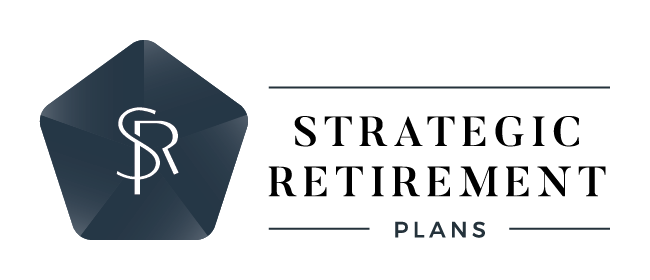If you need funds to cover an unexpected expense, taking a loan from your 401(k) account may sound appealing. Although many retirement plans offer these loans, borrowing from your 401(k) comes with unique risks and costs that can seriously compromise your long-term retirement savings. If you’re considering a 401(k) loan, it’s critical to weigh the pros and cons.
401(k) Loan Basics
Taking a loan from your 401(k) is essentially borrowing from your future to finance other goals today. To avoid dipping into your retirement account, it’s wise to have enough cash saved in an emergency fund to cover at least three months of living expenses. (Ideally, your emergency fund should cover six months of expenses.) If you don’t have any cash reserves, it makes sense to explore other alternatives—such as credit cards or bank lines of credit—before tapping into your retirement funds.
But if borrowing from your 401(k) is your only option in a financial emergency, it’s important to understand how these loans work:
- You can borrow as much as half of your vested account balance, up to a maximum of $50,000, assuming you have no outstanding loans in the previous 12 months.
- If you’ve taken another 401(k) loan in the last 12-month period, you will be limited to 50 percent of your vested account balance, or $50,000, minus the outstanding loan balance in the preceding 12-month period—whichever is less.
- Most loans must be paid back over a 5-year period, but if you use the loan to purchase a primary residence, the term is usually 10 to 15 years.

Pros and Cons of 401(k) Loans401(k) loans do have some attractive features that may make them a viable option, depending on your situation. For example:
- They’re relatively cheap and easy to obtain. (You’re essentially borrowing from yourself and paying yourself back with interest.)
- The interest rate is determined by the plan but is usually based on the prime rate, plus 1 or 2 percent.
- There are no restrictions on the amount you’re eligible to borrow (within the maximum loan limit) or what you mayborrow the money for.
- There are no credit checks, and paperwork is usually minimal.
- Payments are typically deducted from your payroll checks automatically.
- You can choose which plan investments to sell to make cash available for your loan.
Unfortunately, the downsides of 401(k) loans often outweigh these advantages:
- If you default on your loan, the unpaid portion will be treated as an age-based distribution, subject to ordinary income tax, as well as a 10 percent early withdrawal penalty for those under age 591⁄2.
- If you lose your job or leave the company, your plan may require full repayment of the loan within 60 days. If you cannot repay the loan, it will be considered defaulted.
- There’s no flexibility to change the loan repayment terms.
- You pay interest on the loan with after-tax dollars, and that money will be taxed again when you begin taking distributions in retirement.
- To make your loan payments, you will likely reduce the amount you contribute to your 401(k), diminishing your long-term retirement savings.
- By pulling money out of your account, you reduce the valuable benefits of compounding interest.
A Note on Taxes
As mentioned above, interest payments on a 401(k) loan are not tax-deductible. Unlike pretax 401(k) deferrals, which reduce your taxable income, the interest you owe on your plan loan is paid back to your 401(k) with after-tax dollars. Since you will be taxed again on that money when you withdraw it in retirement, it is technically taxed twice. Even though this cost may be relatively minor, it’s another factor to consider.
A Plan of Last Resort
Before you tap into your 401(k), be sure to ask yourself the following questions:
- Are you facing a true financial emergency?
- Have you explored all of your available creditoptions, including home equity loans?
- Do you plan to stay at your job for the next severalyears and feel that your employment is secure?
- Are you prepared to take responsibility for how muchyou borrow and pay back, without a credit check orthe oversight of a bank?
- Have you considered the potential impact on yourtax liability if you borrow more than you can afford and default on your loan payments?
Over time, borrowing from your 401(k) can disrupt your financial well-being. All too often, people use 401(k) accounts as a personal slush fund while disregarding the long-term consequences. Although taking out a 401(k) loan may make sense in some circumstances, it’s essential to consider all of your options to ensure that you’re not shortchanging your future.
How a 401(k) Loan Can Affect Your Nest Egg
- A 30-year-old man with $40,000 in annual income and a 401(k) balance of $45,000 contributes
6 percent per year to get his full employer match of 3 percent. Assuming 3 percent annual raises and a 7 percent investment return in his 401(k), his nest egg will grow to $1,188,091 by age 65. - If, however, he borrows $8,000 from his 401(k) at a 6.75 percent interest rate and pays it back over five years without contributing to the plan during that time, his balance at age 65 falls 14 percent, to $1,020,845.
- As this $167,246 differential illustrates, taking a 401(k) loan can have a far greater long-term opportunity cost than most realize.
- This is a hypothetical example and is for illustrative purposes only. No specific investments were used in this example. Actual results will vary. Past performance does not guarantee future results.


